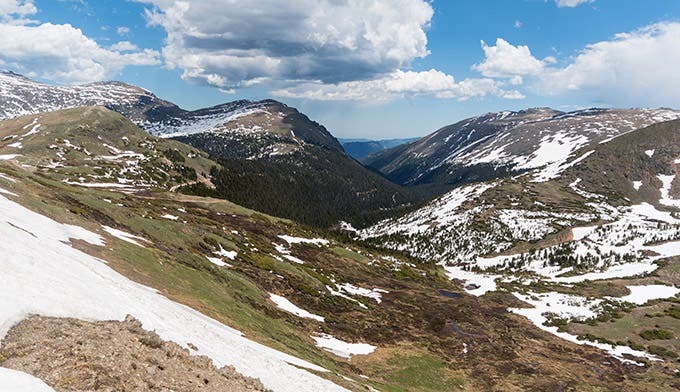Temperatures Change as You Go Higher in Elevation

'Ali Pfenninger'

Don’t make a rookie mistake by dressing for the temperature in Denver, then heading up Trail Ridge Road in Rocky Mountain National Park. You’ll freeze – well, maybe not literally, but it gets colder as you go up in elevation.
Even in summer, some shaded mountain trails remain snow covered. And, on the west side of Rocky Mountain Park, there is a range called the Never Summer Mountains for a reason.
How to Estimate Temperature Change at Elevation
The amount that temperature changes as you gain elevation is dependent on many factors including sunshine, clouds/fog, precipitation, and wind. A temperature inversion, where colder air sinks into valleys because it’s heaver than warm air, can also be a factor.
It can get pretty windy above the tree line, but for our example we will assume the wind will be the same at both low and high elevation and we are not experiencing any unusual temperature factors.
In sunny weather, subtract about 5.4 degrees Fahrenheit for every 1,000 feet you go up in elevation.*
If you are IN a cloud, or if it is snowing or raining, subtract about 3.3 degrees Fahrenheit for every 1,000 feet you go up in elevation.*
Here’s an example: Denver’s elevation is 5,225 feet, Estes Park 7,522 feet, and the Alpine Visitor Center inside Rocky Mountain National Park is at 11,796 feet. On a sunny day, Estes Park could be 12F colder than Denver, and the visitor center could be 23F colder than Estes Park.
Denver 90F – Estes Park 78F – Alpine Visitor Center – 55F
Of course these are just estimates. Weather can also change rapidly. We recommend to pack with at least three layers (shirt, sweater, jacket/coat) and always have a hat, gloves, closed-toe shoes, and socks whenever you go to the park, in all seasons.
Source: Ask a Weatherman